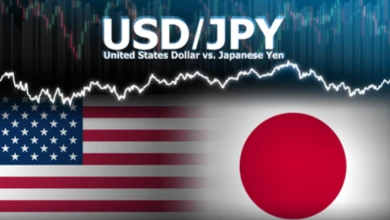Australian Dollar holds ground as Australia Manufacturing PMI rises in November
- The Australian Dollar rises after the release of S&P Global Purchasing Managers Index data.
- S&P Global Manufacturing PMI rose to 51.6 in November from 49.7 prior.
- The US Dollar weakens as the latest labor data raises the Fed rate cut bets in December.
The Australian Dollar (AUD) advances against the US Dollar (USD) on Friday after two days of losses. The AUD/USD pair gains ground following the preliminary reading of Australia’s S&P Global Purchasing Managers Index (PMI).
S&P Global Manufacturing PMI came in at 51.6 in November versus 49.7 prior. Meanwhile, Services PMI rose to 52.7 in November from the previous reading of 52.5, while the Composite PMI increased to 52.6 in November versus 52.1 prior.
The AUD finds support as expectations grow for a cautious stance from the Reserve Bank of Australia (RBA). Minutes from the RBA’s November meeting indicated the central bank may keep rates unchanged for an extended period if economic data continues to outperform.
RBA Assistant Governor Sarah Hunter said on Thursday that “sustained above-trend growth could fuel inflationary pressures.” Hunter noted that monthly inflation data can be volatile and that the central bank won’t react to a single month of figures.
ASX 30-Day Interbank Cash Rate Futures show that as of November 18, the December 2025 contract traded at 96.41, implying an 8% probability of a rate cut to 3.35% from 3.60% at the upcoming RBA Board meeting.
US Dollar eases as Fed rate cut bets increase
- The US Dollar Index (DXY), which measures the value of the US Dollar (USD) against six major currencies, is halting its five-day winning streak and trading around 100.10 at the time of writing. Traders await the US S&P Global PMI data due later in the North American session.
- The Greenback eases as September jobs data boosted expectations of a Fed rate cut in December. The CME FedWatch Tool suggests that financial markets are now pricing in a 36% chance that the Fed will cut its benchmark overnight borrowing rate by 25 basis points (bps) at its December meeting, up from 30% probability that markets priced a day ago.
- Nonfarm Payrolls (NFP) in the United States (US) rose by 119,000 in September, compared to the 4,000 decrease (revised from +22,000) recorded in August. This figure surpassed the market expectation of 50,000.
- The US Unemployment Rate ticked up to 4.4% in September from 4.3% in August. The Average Hourly Earnings held steady at 3.8% YoY, compared to the market expectation of 3.7%.
- FOMC Minutes for the October 28-29 meeting indicated that Fed officials are divided and cautious about the path forward for interest rates. Most participants indicated further rate cuts would likely be appropriate over time, but several indicated they did not necessarily view a reduction in December as appropriate.
- The CME FedWatch Tool suggests that financial markets are now pricing in a 40% chance that the Fed will cut its benchmark overnight borrowing rate by 25 basis points (bps) at its December meeting, down from 50% probability that markets priced a week ago.
- Richmond Fed President Thomas Barkin said on Tuesday that the labor market appears more balanced, with firms reporting improved worker availability and recent layoffs signalling the need for caution. Barkin noted inflation doesn’t seem to be rising, but it’s also unclear whether it will return to the Fed’s 2% target. He highlighted that, without more decisive data, it remains difficult to reach a broad policy consensus.
- US President Donald Trump said in an Oval Office interview on Tuesday that he “would love” to remove Fed Chair Jerome Powell immediately. Trump added that he already has a preferred candidate in mind for the position, noting that there are “some surprising names” under consideration, though the administration may ultimately choose a more traditional option.
- The People’s Bank of China (PBoC) decided on Thursday to leave its Loan Prime Rates (LPRs) unchanged in November. The one-year and five-year LPRs were at 3.00% and 3.50%, respectively. As China and Australia are close trading partners, China’s policy rates can affect the AUD.
- Australia’s seasonally adjusted Wage Price Index rose 0.8% quarter-on-quarter in Q3, unchanged from the previous period and in line with forecasts. Annually, wages increased 3.4%, also matching both the previous quarter’s pace and market expectations.
- The Reserve Bank of Australia published the Minutes of its November monetary policy meeting on Tuesday, indicating that board members signalled a more balanced policy stance, adding that it could keep the cash rate unchanged for longer if incoming data proves stronger than expected.
Australian Dollar rebounds from lower rectangle boundary near 0.6550
The AUD/USD pair is trading around 0.6450 on Thursday. The daily chart analysis indicates that the pair is moving sideways within a rectangular range, signalling a period of price consolidation. Meanwhile, the price remains below the nine-day Exponential Moving Average (EMA), highlighting that the short-term price momentum is weaker.
On the downside, the AUD/USD pair finds immediate support at the lower boundary of the rectangle around 0.6440, followed by the five-month low of 0.6414, which was recorded on August 21.
The initial barrier lies at the nine-day EMA of 0.6487, followed by the psychological level of 0.6500. A break above this confluence resistance zone would improve the short-term price momentum and lead the pair to reach the rectangle’s upper boundary near 0.6630.

Australian Dollar Price Today
The table below shows the percentage change of Australian Dollar (AUD) against listed major currencies today. Australian Dollar was the strongest against the US Dollar.
| USD | EUR | GBP | JPY | CAD | AUD | NZD | CHF | |
|---|---|---|---|---|---|---|---|---|
| USD | -0.09% | -0.09% | -0.11% | -0.07% | -0.07% | -0.07% | -0.18% | |
| EUR | 0.09% | -0.00% | -0.04% | 0.02% | 0.01% | 0.01% | -0.09% | |
| GBP | 0.09% | 0.00% | -0.04% | 0.02% | 0.02% | 0.02% | -0.09% | |
| JPY | 0.11% | 0.04% | 0.04% | 0.07% | 0.06% | 0.05% | -0.05% | |
| CAD | 0.07% | -0.02% | -0.02% | -0.07% | -0.01% | -0.02% | -0.12% | |
| AUD | 0.07% | -0.01% | -0.02% | -0.06% | 0.01% | -0.00% | -0.11% | |
| NZD | 0.07% | -0.01% | -0.02% | -0.05% | 0.02% | 0.00% | -0.11% | |
| CHF | 0.18% | 0.09% | 0.09% | 0.05% | 0.12% | 0.11% | 0.11% |
The heat map shows percentage changes of major currencies against each other. The base currency is picked from the left column, while the quote currency is picked from the top row. For example, if you pick the Australian Dollar from the left column and move along the horizontal line to the US Dollar, the percentage change displayed in the box will represent AUD (base)/USD (quote).






